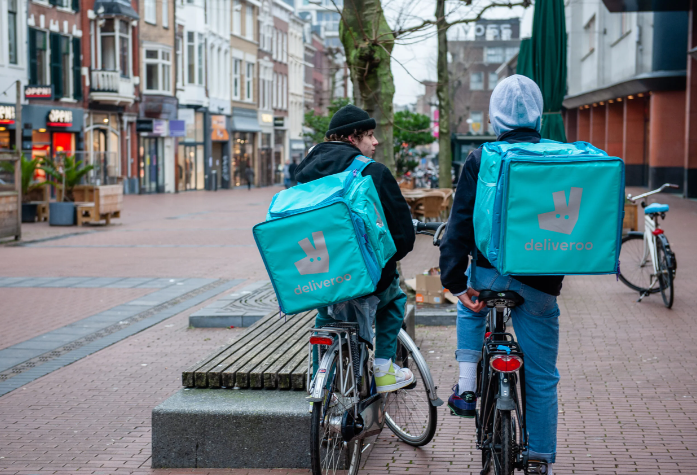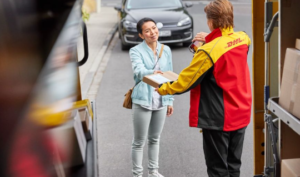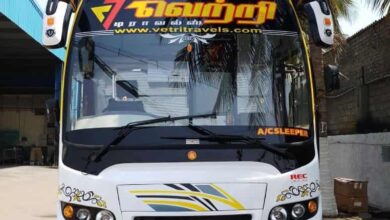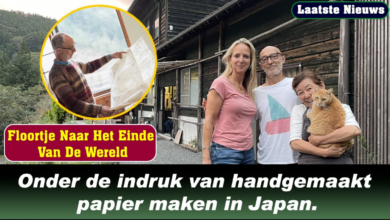
Deliveroo Disappears in the Netherlands Soon: Final Countdown!
Deliveroo is set to exit the Dutch market soon. The food delivery service announced its withdrawal amid fierce competition.
Deliveroo, the popular on-demand food delivery platform, will cease operations in the Netherlands, impacting customers and affiliated restaurants. After struggling with intense market rivalry, Deliveroo has focused on more profitable regions. This move marks a significant shift in the Dutch food delivery landscape, with Deliveroo being a notable player.
The upcoming departure of Deliveroo underscores the competitive nature of the food delivery industry, where operational efficiency and market dominance are critical for survival. Users and partner establishments must now adapt to a market without Deliveroo’s services, which may alter the country’s food delivery dynamics.
The Rise Of Deliveroo In The Netherlands

Credid:dhl.com
It was a match meant to blossom. Deliveroo, a pioneering food delivery service, found fertile ground in the Netherlands. Fast-paced lifestyles in cities like Amsterdam and Utrecht craved quick meal solutions. Deliveroo offered just that, propelling the brand to a household name.
Early Success And Expansion
Starting with a handful of cyclists in the capital, Deliveroo’s model connected diners with a plethora of eateries. The platform rapidly expanded, merging technology with the desire to eat well. This spark ignited a journey from major cities to smaller towns.
Word of mouth worked like magic for Deliveroo. Soon, residents across the Netherlands knew the name. Bikes sporting the Deliveroo logo became a common sight. The service was no longer a luxury but a necessity. Variety in choices and speed in delivery were the drivers of this rise.
Impact On the Local Delivery Market
The entry and growth of Deliveroo had a significant effect. Suddenly, local restaurants saw an opportunity. They could reach more customers without additional overheads. Competition rose, spurring improvements across the board.
- Increased demand for food delivery
- Expansion of services in smaller towns
- Inclusivity of various cuisines
Deliveroo’s business model empowered small businesses, too. Eateries that once relied on footfall alone now enjoyed a broader customer base. This collaboration was a win-win: Restaurants thrived, consumers relished diversity, and Deliveroo solidified its presence.
Factors Leading To The Departure
Deliveroo’s departure from the Netherlands is an unexpected twist. This exit does not come without reason. Key factors contribute to this significant business decision. Understand what’s behind this move.
Market Competition And Challenges
The food delivery market is fierce. Competing services like Uber Eats and Eat Takeaway offer similar services. Deliveroo must fight for every customer. This market has known big players long-established. New entrants face tough battles. Deliveroo met these challenges head-on, but obstacles remained.
Costly promotions, advertising campaigns, and discounts are standard. They aim to lure customers from rivals. Yet, such strategies eat into profits. In a crowded market, differentiation is critical. However, creating a unique selling point requires investment, innovation, and finite and often scarce resources.
Challenges include:
- Intense pricing wars
- Customer loyalty to established brands
- High marketing expenses
Financial Performance And Strategic Decisions
Finance tells a business’s health story. Deliveroo’s financial performance is under scrutiny. Figures show challenges are more than just market-deep. The company’s revenue and profit margins present a clearer picture. Investors and stakeholders need positive numbers. Yet, Deliveroo’s numbers show struggle and influence tough decisions.
Strategic choices address these financial issues. Cutting costs, optimizing operations, and exiting unprofitable markets are common. They reflect an aim to stabilize the business. Decision-makers weighed costs and potential gains. Staying in the Netherlands seemed unsustainable under the current business model.
Key financial markers include:
| Aspect | Details |
| Revenue Growth | Slowed amidst competition |
| Profit Margins | Narrowed due to high costs |
| Market Share | Declined against competitors |
Ultimately, Deliveroo’s exit reflects careful planning. It acknowledges the harsh landscape of the food delivery sector and is a response to surviving and thriving in other markets.
Timeline Of The Withdrawal
Big news hits the Netherlands as Deliveroo prepares to say goodbye. Users and foodies brace for change. The timeline is critical to the plan. Let’s unfold the sequence of events leading to the exit of this food delivery giant.
Official Announcement Details
Deliveroo’s exit sent shockwaves through the Dutch food delivery scene. The company shared plans to cease operations, and customers and restaurants noted the significant shift. Strategic choices led to Deliveroo’s tough decision.
Critical Dates For Service Wind-down
| Date | Event |
| Feb 15 | Last day to order |
| Feb 16 | App goes offline |
| Mar 01 | Customer support ends |
- Feb 15: Place final orders.
- Feb 16: Deliveroo app shuts down.
- Mar 01: Customer service concludes.
Reactions From The Dutch Market
The Dutch market is buzzing with chatter as Deliveroo prepares to pedal away, leaving customers and business owners with mixed feelings. This section examines the various reactions across the Netherlands.
Restaurants’ Perspective
Eateries that have partnered with Deliveroo are facing a significant change. Restaurant owners express concern over the impending departure of this delivery giant.
- Fears of lost revenue surface with Deliveroo’s exit.
- Some are exploring alternatives to fill the gap.
- A few are optimistic, seeing chances for new delivery collaborations.
Local joints worry about the impact on their delivery sales as Deliveroo vanishes.
| Impact Aspect | Restaurant Feedback |
| Revenue | Concerns for decreased earnings |
| Delivery Operations | Search for alternative solutions |
| Customer Reach | Worry over maintaining a customer base |
Customer Sentiment And Response
Patrons of Deliveroo share their take. Surprise and disappointment are common emotions among them.
- Many will miss the convenience Deliveroo provided.
- Loyal users feel the pinch as they seek substitutes.
- A subset embraces change and is ready to support other services.
Discussions on social platforms indicate a strong customer reaction to the news.
Shopping habits hint at a shift to local services or global rivals filling the void left by Deliveroo.
Impact On Employees And Riders
The unexpected exit of Deliveroo from the Netherlands marks a significant change for those powering the service. Employees and riders face uncertain futures as the company prepares to cease operations. This segment delves into the ramifications for these key personnel and explores the available support mechanisms during the transition period.
Employment Implications
The withdrawal of Deliveroo from the Dutch market has profound employment implications. A sudden loss of job opportunities for riders and office staff looms. Full-time employees must seek new positions. Contract riders must pivot to alternative platforms or different income sources. The following points outline the employment impacts:
- Job Security: Stability for full-time workers dissipates.
- Income Disruption: Riders contend with immediate earnings disruption.
- Market Alteration: Competitive dynamics shift for remaining delivery services.
Support And Transition Plans For Workers
Deliveroo announces measures to ease the transition for affected workers. Support plans are crucial to mitigate the impact on the livelihoods of employees and riders. Detailed plans include:
| Support Initiatives | Details |
| Severance Packages | Financial cushion for full-time employees |
| Career Services | Resume assistance and job search support |
| Transition Assistance | Guidance for riders exploring new platforms |
The company commits to offering personalized support for all team members. Sessions cover resume building and interview preparation. Deliveroo also pledges to connect riders with other delivery platforms seeking to expand their workforce. The table summarizes the initiatives:
Ripple Effects On The Gig Economy
Deliveroo’s impending departure from the Netherlands sends ripples through the gig economy. This move prompts us to question the endurance of such business models, and stakeholders across the industry are taking note. The consequences extend beyond the loss of a convenient service. They touch upon the stability of gig work itself.
Lessons For Other Players
Gig economy giants can learn valuable lessons from Deliveroo’s exit. It illustrates the need for flexibility and adaptation. Competitive markets require continuous innovation. Companies must prioritize sustainability alongside growth. Balancing profit with worker welfare remains crucial. Anticipating market changes can secure a company’s future.
Regulatory And Industry Implications
Regulations shape industries, especially the gig sector. Deliveroo’s withdrawal highlights regulatory challenges. It sparks discussions on employment rights within gig work. These events could lead to stricter industry standards. Companies could adjust by offering more secure working conditions. This shift could redefine the gig economy landscape.
- Increased scrutiny on gig economy practices
- Push for improved worker benefits and rights
- Need for more precise definitions of employment statuses
Change is imminent as the gig economy evolves. Other players must navigate carefully. Deliveroo’s exit serves as a cautionary tale. It stresses the importance of staying ahead of regulations. Aligning business models with societal expectations is no longer optional—it’s essential.
Consumer Alternatives Post-delivery
With Deliveroo exiting the Netherlands, foodies might wonder what’s next. Good news! Plenty of services are ready to take up the mantle.
Local Delivery Start-ups
Small businesses are stepping up their game. Let’s explore the local start-ups entering the scene.
- Eetgemak – Focuses on fresh, locally-sourced meals.
- Streekbox – Delivers regional specialities to doorsteps.
- Bicycle couriers offer a green touch to meal delivery.
International Giants Filling The Void
Do not worry; global players are here to fill your plates.
| Service | Cuisine Options | Delivery Speed |
| Uber Eats | Varied from fast food to fine dining | Fast, within 30 minutes |
| Thuisbezorgd | Wide range, including international dishes | Quick, often under 45 minutes |
| GoPuff | Snacks, drinks, and essentials | Rapid, sometimes within minutes |
Exploring The Future Of Food Delivery
The future of food delivery is swiftly changing, especially with the recent news of Deliveroo planning to exit the Netherlands. This shift has sparked interest in what’s next for this dynamic industry. As leading services reimagine how they operate, changes that could redefine the food delivery landscape are afoot.
Innovation In The Delivery Space
Innovation drives the food delivery industry forward. Tech advances and new business models shape how we get our meals. Think drones flying to your doorstep or meals cooked in roving kitchens. Technology makes getting food faster, more innovative, and more exciting. Many companies invest in these clever methods. They aim to deliver your favourite dishes in ways you never imagined.
- Smartphone apps with real-time tracking
- Autonomous delivery robots
- Drones dropping off meals
Predicting The Next Delivery Disruptors
Food delivery will meet new challengers, ready to break the norm. They will redefine convenience and choice. Speed and sustainability will top their goals. The next giants will blend tech, user experience, and eco-friendly practices.
- Companies focusing on zero emissions delivery
- Personalized meal subscriptions using AI
- Local delivery networks empowering small businesses
Predictions hint at a more personalized and sustainable delivery scene. New players will emerge, and existing ones will adapt or merge. We will likely see better service, faster delivery, and greener practices.
Conclusion
As Deliveroo prepares to bid farewell to the Dutch market, customers and local businesses face significant changes. The platform’s departure marks the end of an era of convenient food delivery in the Netherlands. Explore alternative services to satisfy your cravings and support your favourite eateries.




